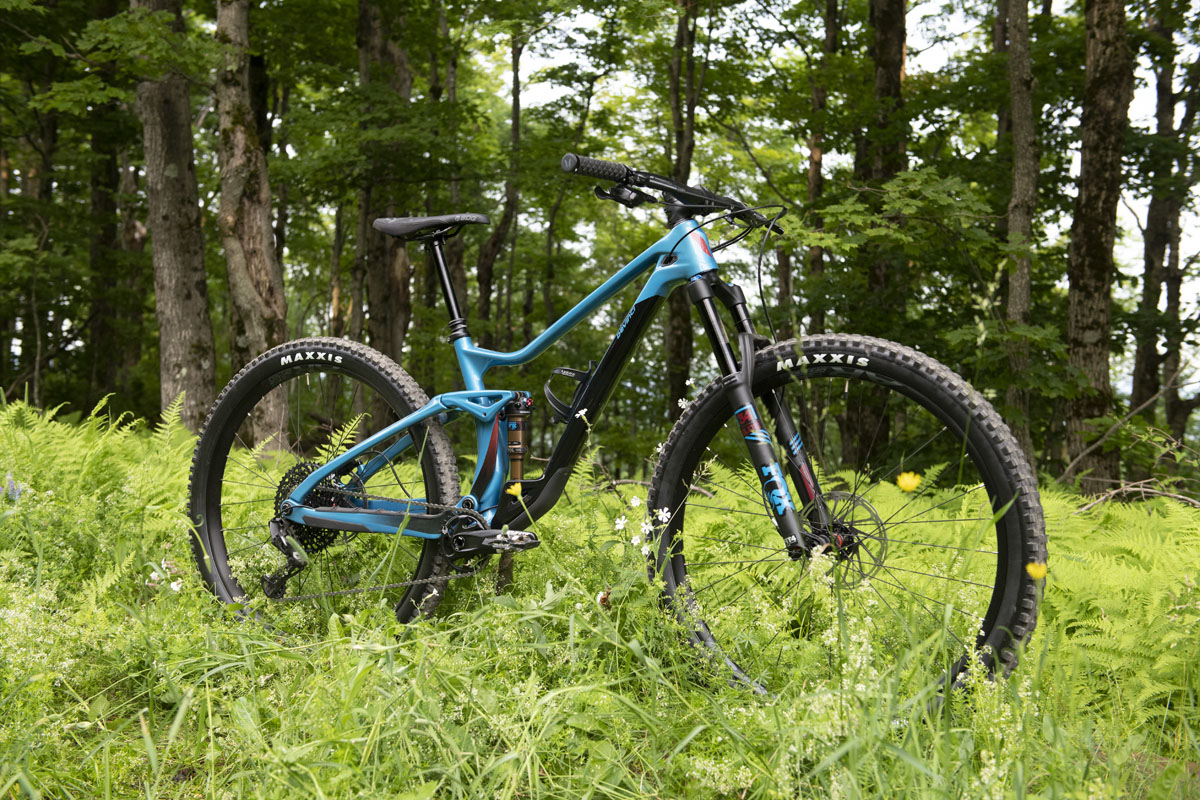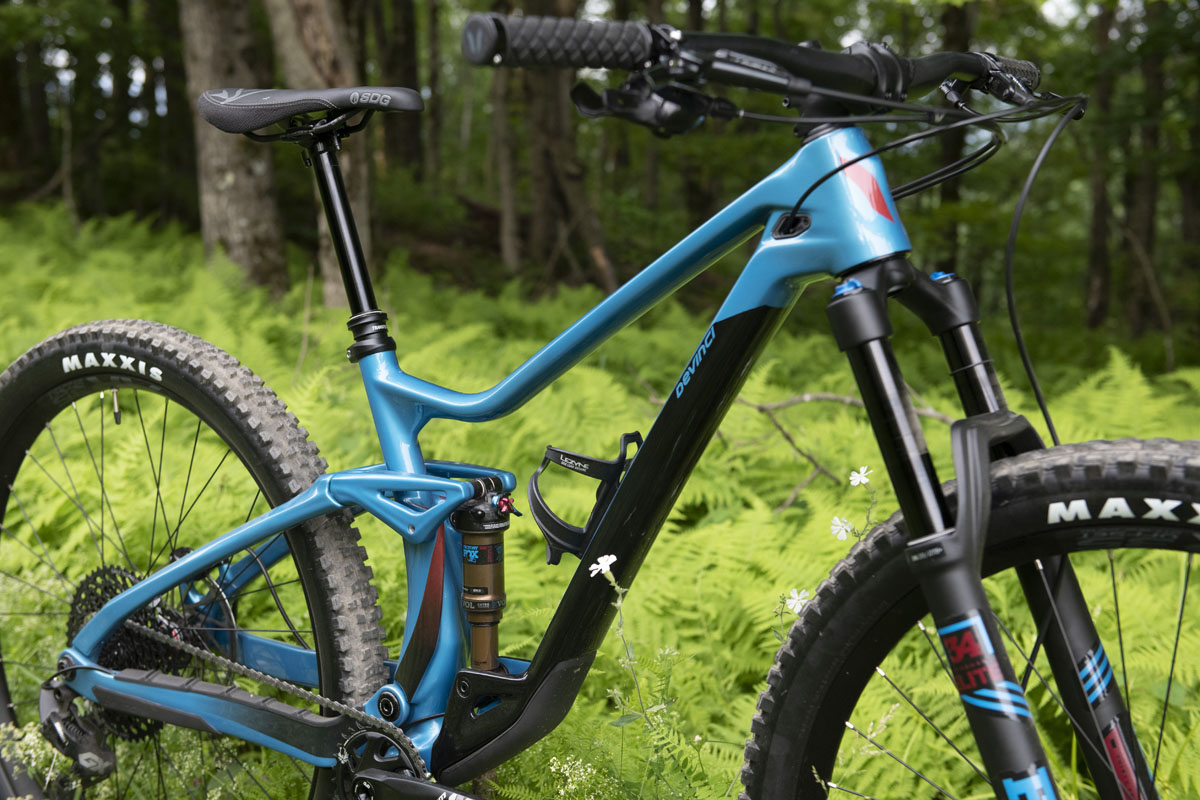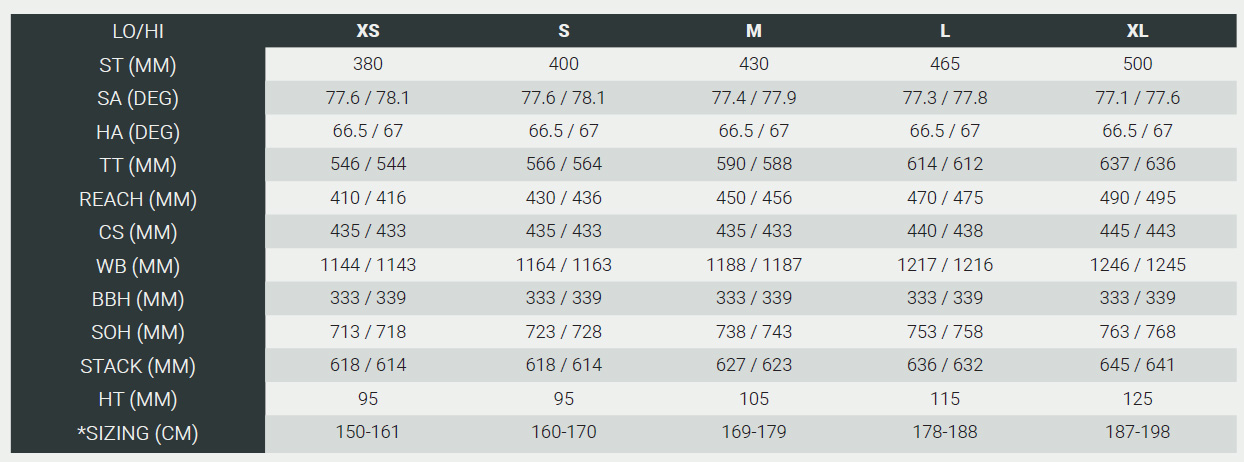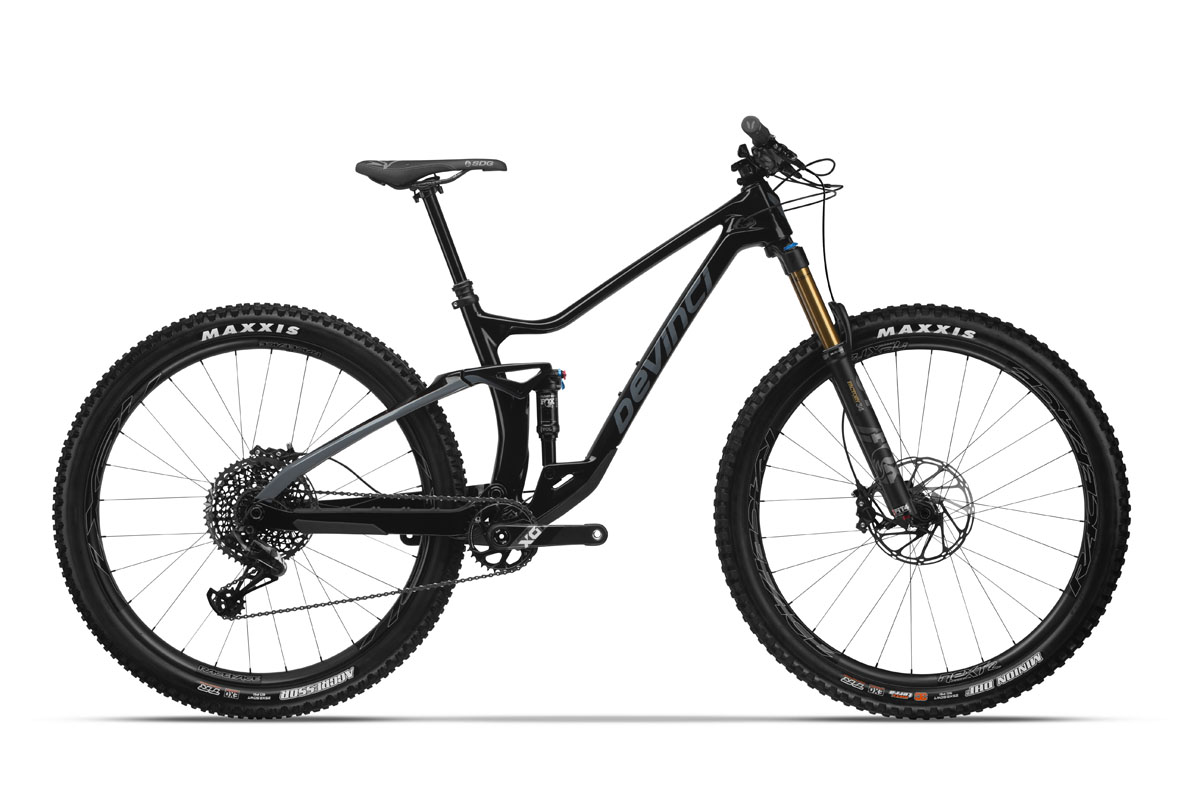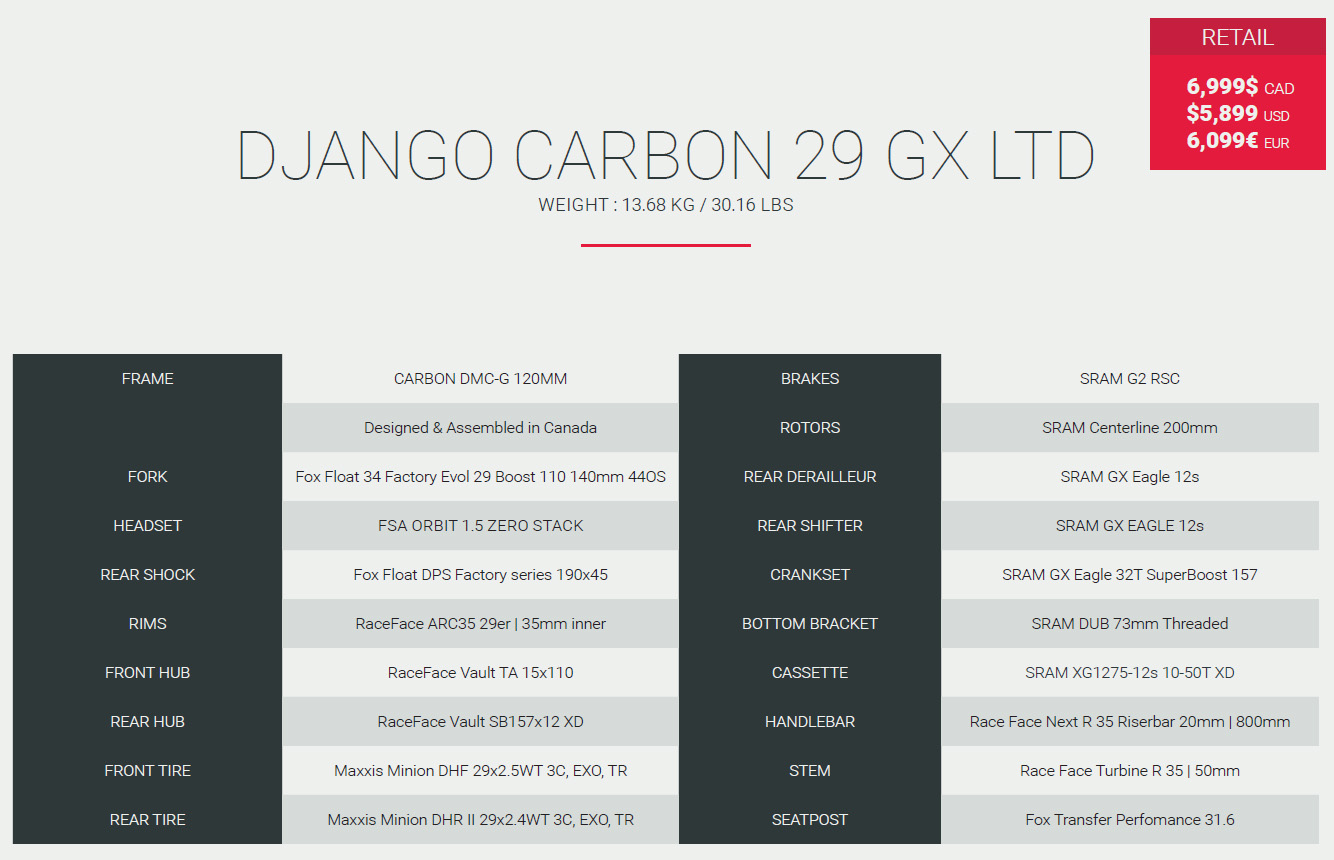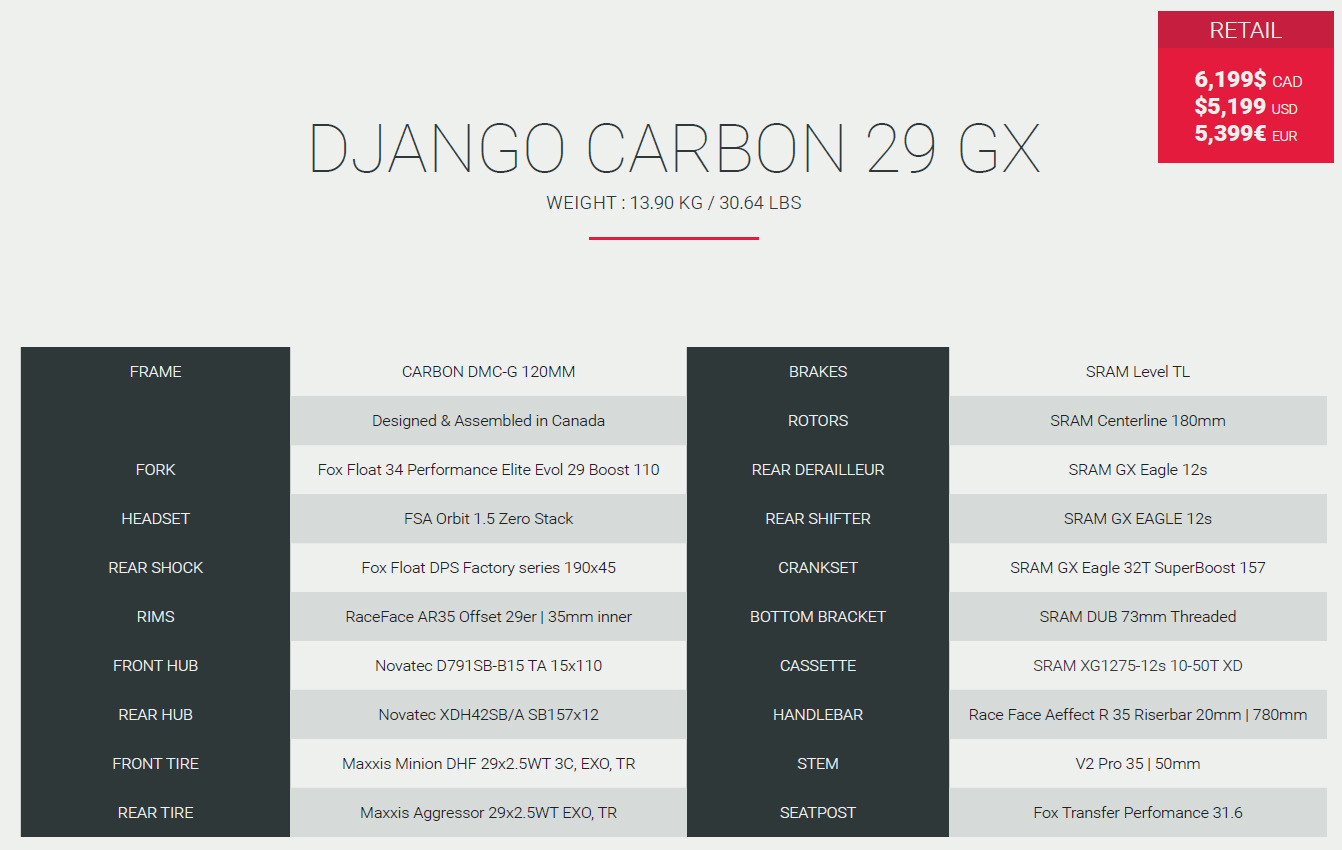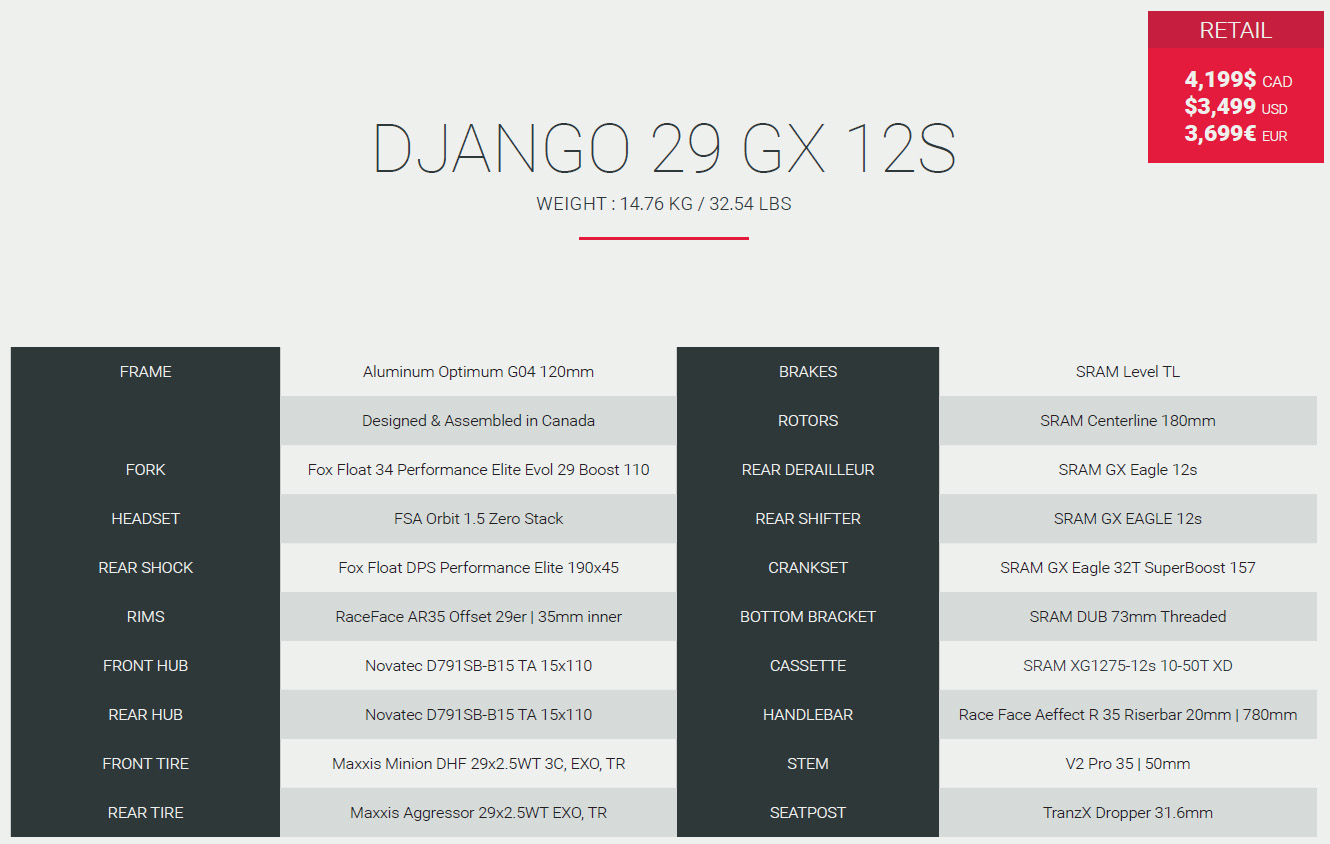The last time we heard from Devinci about the Django, it was just getting its first pair of 29″ wheels. Clearly, much has changed in the world of mountain bikes since 2016, and the Django is now changing as well. This time, 29″ wheels are the main focus with the ability to run 27.5 x 2.8″ wheels and tires if you need it. The bike also gains a substantial change in geometry and a few new features to make it more capable than ever.
We’ve seen a lot more bikes moving to SuperBoost 157 x 12mm rear hub spacing, and now the Django can be added to that group. The change helps with the 29 x 2.6″ tire clearance and short 433mm chainstays, but as we’ve seen with a few other manufacturers, it isn’t required to hit those numbers. However, the Django should benefit from a stiff rear wheel and with more and more bikes moving that way, wheel and hub availability shouldn’t be an issue.
The Django frame still uses a Split Pivot suspension layout, but everything has been updated with a new rocker link, dual row linkage bearings, and a relocated flip chip at the lower shock mount.
As a whole, the new Django is quite a bit than the previous model in terms of geometry. The fork has been bumped up to 140mm travel with a 44mm offset from 130mm, but the rear travel stays at 120mm. The seat tube angle is more than 3° steeper, while the head tube angle gets 1.5° slacker. Reach numbers have also increased by about 10mm, and Devinci has even moved to an “Adapted Chainstay Length” which means the large and extra large frames have longer chainstay lengths to keep the ride feel balanced. You’ll even find a new XS size which is still impressive with the big wheels.
The relocated flip chip changes the head and seat tube angle by 0.5° and changes the BB height. With the slackest setting on par with new bikes like the Ibis Ripley with a 66.5° head tube angle, the slightly steeper setting may be of interest to riders who don’t want their bike to quite so slack.
Other frame details include clever touches like a rear pivot brake cable clip to prevent frame rub, a cleanly routed cable holder under the shock, two bolt ISCG mounting tabs for chain guides, and a threaded bottom bracket for easy maintenance. To maximize your drop, the dropper post compatibility is staggered with XS at 100mm, S at 125mm, M at 150mm, and both L & XL at 175mm. Frame weight is claimed at 2.92kg/6.44lbs.
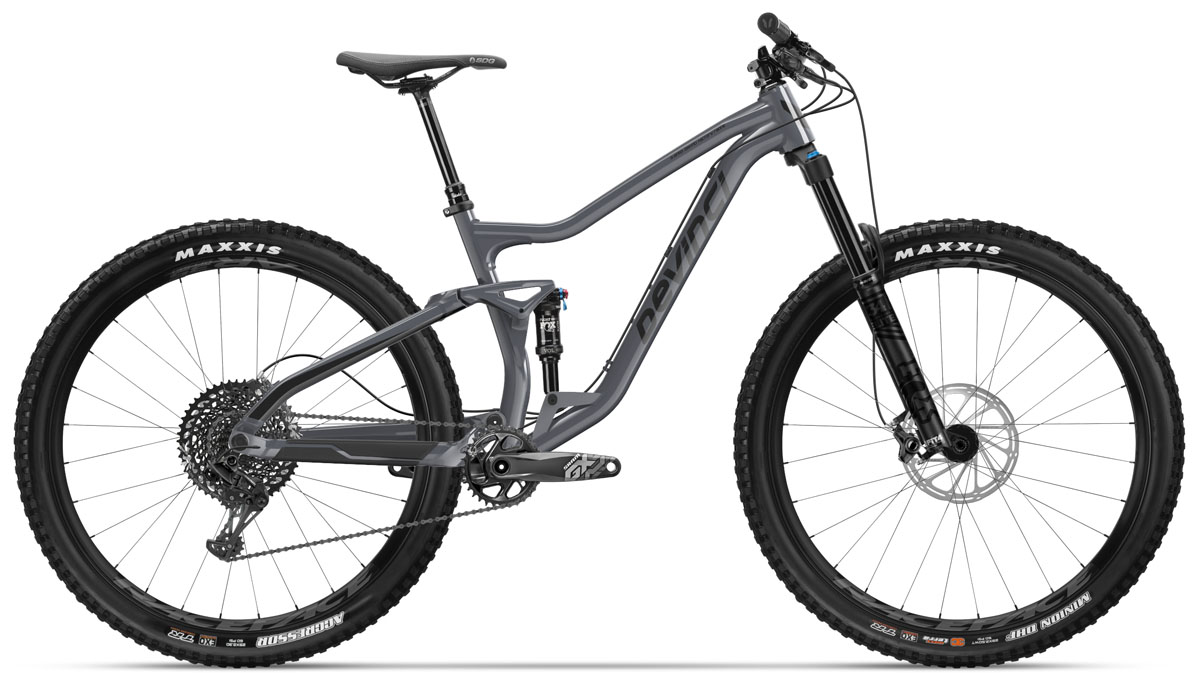 Available in both carbon and aluminum frames, the differences seem mostly limited to the material with a few cable routing tweaks as well.
Available in both carbon and aluminum frames, the differences seem mostly limited to the material with a few cable routing tweaks as well.
Pricing ranges from $2,699 to $8,399, with a frame only option available for $3,199 as well.

